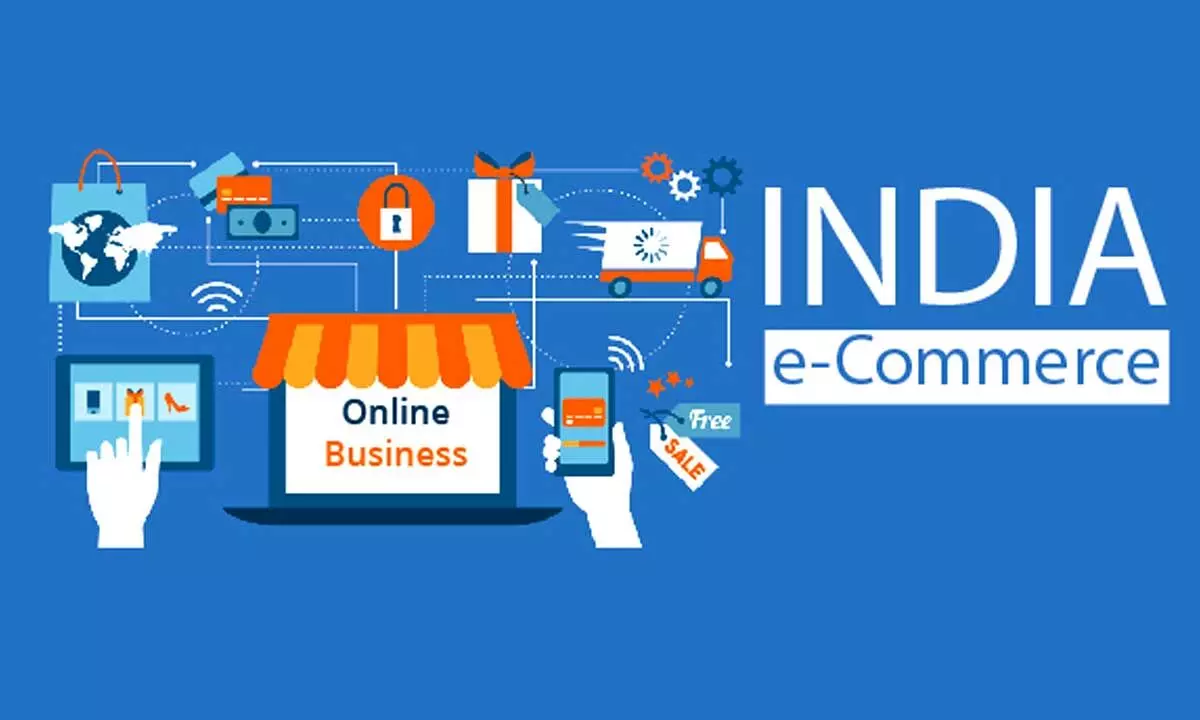Penetrating into small towns has propelled growth of India’s ecommerce market
It is projected to boast of an annual gross merchandise value of $350 bn by 2023
image for illustrative purpose

With 90% of B2B customers expecting B2C-like digital experiences, B2B companies must work to improve their customer experiences online to catch up with B2C companies. This includes creating an omni-channel experience with multiple touch-points and using data to create personalized relationships with customers.
Ecommerce solutions can allow self-service, provide more user-friendly platforms for price comparison and help B2B brands maintain relationships with buyers, too
The global ecommerce growth rate for 2023 is forecast at 8.9%, bringing global ecommerce sales worldwide to $5.9 trillion. This marks a 1.8 percentage point increase from that of 2022 after a massive dip in 2021.
According to eMarketer, global retail ecommerce sales will surpass $5 trillion for the first time in 2022, accounting for more than a fifth of overall retail sales. And by 2025, the total spending will exceed $seven trillion, despite slowing growth.
Ecommerce has come a long way since the CompuServe launch in 1969. Driven by changes in technology and global circumstances, ecommerce is growing and shows no sign of stopping.
Sales in online stores are expected to reach 22% of global retail sales by 2023, compared to 14.1% in 2019. It is estimated that by 2024, digital wallets will account for over half of total ecommerce payment volumes. Amazon will account for 39.5% of all US retail ecommerce sales in 2022, or nearly $2 in $5 spent online.
For many small businesses, ecommerce adoption can be a slow process. However, those who embrace it may discover that ecommerce can open doors to new opportunities. Slowly, small business owners are launching ecommerce stores and diversifying their offerings, reaching more customers and better accommodating those who prefer online/mobile shopping.
However, with ecommerce sales growing by the year and one in four small businesses still lacking an online store, there remains a prime opportunity for entrepreneurs to gain a competitive edge and expand their businesses online.
With 90% of B2B customers expecting B2C-like digital experiences, B2B companies must work to improve their customer experiences online to catch up with B2C companies. This includes creating an omni-channel experience with multiple touch-points and using data to create personalized relationships with customers.
Ecommerce solutions can allow self-service, provide more user-friendly platforms for price comparison and help B2B brands maintain relationships with buyers, too.
The domestic e-commerce industry has been on an upward growth trajectory. Its market was estimated to be worth over $55 bn in Gross Merchandise Value in 2021. By 2030, it is expected to have an annual gross merchandise value of $350 bn.
Fuelling e-commerce growth: India will have over 907 million internet users this year, which accounts for 64% of the country’s population. It is growing on levers such as increased smartphone penetration, increased affluence and low-data prices, providing impetus for e-retail growth. With over 800 mn users, India is the second largest internet market in the world with 62 billion UPI transactions in 2022.
Close to 100 per cent of pin codes in India have seen e-commerce adoption. More than 60 per cent of transactions and orders come from tier two cities and small towns. The e-commerce trend is gaining in popularity even in tier-2 and tier-3 cities as they now make up nearly half of all shoppers and contribute three of every five orders for leading e-retail platforms. The average selling price (ASP) in tier-2 and smaller towns is only marginally lower than in tier-1/metro cities. Electronics and apparel make up nearly 70 per cent of the e-commerce market, when evaluated against transaction value. Other new upcoming categories within e-commerce include ed-tech, hyper-local and food-tech.
Global retail e-commerce sales are expected to grow to $6.3 trillion in 2023, almost double the pre-pandemic figures of $3.5 trillion in 2019, says Statista. By 2026, they anticipate this amount to grow to $8.1 trillion.
Statista also indicates that the Chinese retail group Alibaba is the global leader, with online sales totalling more than $700 billion in 2022. However, by 2027, experts anticipate that US-based giant Amazon will surpass that with more than $1.2 trillion in sales.
Research from Insider Intelligence says mobile e-commerce sales (or m-commerce) will make up 43.4% of total retail e-commerce sales in 2023, up almost by two per cent from last year.
A basic online shop designed for desktops is no longer enough to drive sales. Customers want the convenience of purchasing on their smartphone or tablet on the go (or from the couch).
Sites must be mobile optimized (responsive with fast loading times) and easy to use, making the shopping experience seamless regardless of the device.

